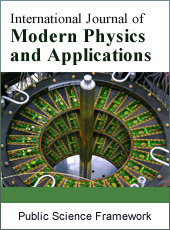International Journal of Modern Physics and Applications
Articles Information
International Journal of Modern Physics and Applications, Vol.1, No.4, Sep. 2015, Pub. Date: Aug. 3, 2015
Numerical Modelling of Two-Phase Flow in an Effervescent Atomizer Using Volume of Fluid Mehtod
Pages: 186-192 Views: 6063 Downloads: 1877
[01]
A. Helmy, Mechanical Power Engineering Department, Faculty of Engineering, Menoufiya University, Shebin El-Kom, Egypt.
[02]
S. Wilson, Mechanical Power Engineering Department, Faculty of Engineering, Menoufiya University, Shebin El-Kom, Egypt.
[03]
A. Siam, Mechanical Power Engineering Department, Faculty of Engineering, Menoufiya University, Shebin El-Kom, Egypt.
[04]
A. Balabel, Mechanical Engineering Department, Faculty of Engineering, Taif University, Taif, Saudi Arabia.
Effervescent atomizers have showed to work well in terms of lower droplets size at relatively low injection pressure. In effervescent atomizer, a type of internal-mixing twin-fluid atomizer, the gas is bubbled in the liquid to form bubbly mixture upstream atomizer exit. The flow nature upstream atomizer exit affects the atomizer performance to great extent. In literature, several studies were done to simulate internal flow. Few results have used volume of fluid method. In the current study the two phase flow inside the atomizer was numerically simulated using the volume of fluid model. Validation with experimental work was performed first. The results were found in close agreement with the experimental correlation. The main purpose of the current study is to investigate the application of effervescent atomizer in aviation gas turbine and to investigate the internal flow evolution inside the atomizer. The fuel used is Jet-A1 commercial aviation fuel. The present results showed that the gas to liquid mass ratio (GLR) is one of the major contributory factors affecting the atomizer performance. The two phase flow was identified as slug flow in the discharge passage at low GLR (0.08%). The flow evolved to slug- annular flow at GLR= 0.5%. At high GLR (0.8%) the annular flow was distinguished. The mixing between phases was augmented with increasing GLR. Finally the liquid film thickness at the atomizer outlet was calculated. The results showed that the liquid film thickness decreased with increasing GLR. Lower GLRs affect liquid film thickness sharply than higher GLRs.
Effervescent Atomizer, Liquid Film Thickness, Numerical Modelling, Two-Phase Flow, Volume of Fluid
[01]
"Aviation Fuel Properties", coordinating research council, Georgia, 1983. Sovani, S.D., Sojka, P.E. and Arthur H. Lefebvre, "Effervescent Atomization Prog. Energy Combust. Sci., Vol. 27, pp. 483-521, 2001.
[02]
Sovani, S.D., Sojka, P.E. and Lefebvre, A.H. "Effervescent Atomization”, Prog. Energy Combust. Sci., Vol. 27, pp. 483-521, 2001.
[03]
Lin, K.C., Kennedy, P.J. and Jackson and T.A. "Structures of Internal Flow and the Corresponding Spray for Aerated-Liquid Injectors", AIAA Paper 2001-3569, 2001
[04]
T. A., "Numerical Simulation of Transient Two-Phase Flow within Aerated-Liquid Injectors", AIAA Paper 2003-4266, 2003.
[05]
Esfarjani S A, and Dolatabadi A, " A 3D simulation of two-phase flow in an effervescent atomizer for suspension plasma spray", Surf Coatings Tech, 2009, 203: 2074–2008.
[06]
K. Mehmood and J. Masud," Analysis of Two-Phase Flow in an Effervescent Atomizer Using Volume of Fluid Method", AIAA paper, 0312 , 2012.
[07]
C.W. Hirts and B.D. Nicholas, "Volume of fluid (VOF) method for the dynamic of free boundaries", journal of computational physics, 39,201-255,1981.
[08]
FLUENT, Computational Fluid Dynamics Software Package, Ver. 6.3.26, Fluent Inc, Lebanon, NH.
[09]
J.U. Brackbill, D.B .Kothe and Zemach, "A Contin-mium method for modeling surface tension", journal of computational physics, 100,335-354,1992.
[10]
K. Ramamurthi, U.K. Sarker, and B.N. Raghunandam “performance characteristics of effervescent atomizers in different flow regimes", atomization and spray, vol 19, pp 41-56, 2009.

ISSN Print: 2381-6945
ISSN Online: 2381-6953
Current Issue:
Vol. 7, Issue 1, March Submit a Manuscript Join Editorial Board Join Reviewer Team
ISSN Online: 2381-6953
Current Issue:
Vol. 7, Issue 1, March Submit a Manuscript Join Editorial Board Join Reviewer Team
| About This Journal |
| All Issues |
| Open Access |
| Indexing |
| Payment Information |
| Author Guidelines |
| Review Process |
| Publication Ethics |
| Editorial Board |
| Peer Reviewers |


